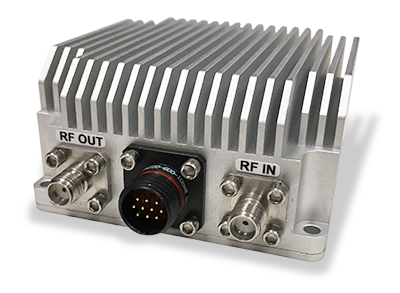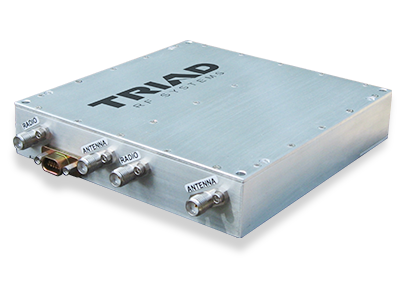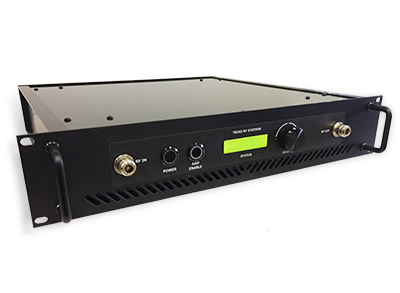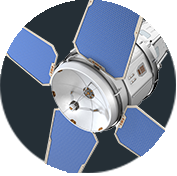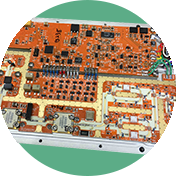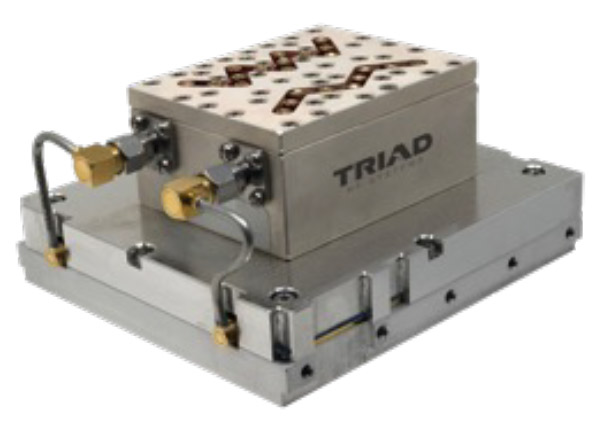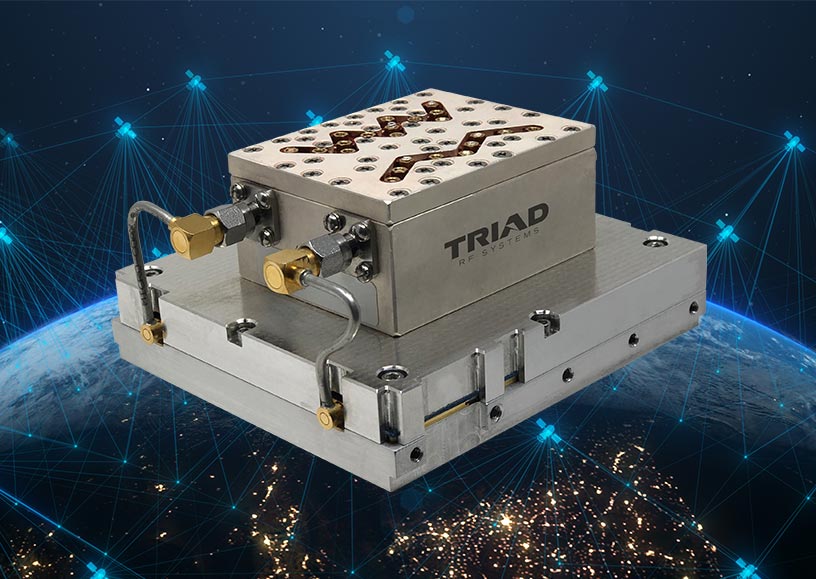
Triad RF Enables Next-Gen Satellite NB-IoT Networks with 5G-Specific CubeSat Radio Front End
By Adam Krumbein, Triad RF Systems
With wireless internet infrastructure widely available, the ability to network more products and systems together continues to drive the growing number of Internet of Things (IoT) connected devices offered for consumer, business, and industrial use.
In their “2023 state of IoT” report, industry analysis and research firm IoT Analytics forecast the global IoT market to grow from 16.7 billion installed active endpoints in 2023 to 29.7 billion installed active endpoints by 2027, representing a compound annual growth (CAGR) of 16%:

Global IoT demand is forecasted to reach 29.7 billion devices by 2027. Source: IoT Analytics
Specific segments within the IoT market are set to grow even faster, with cellular 5G IoT services forecasted to grow at +87% CAGR vs. the +16% overall market increase through 2027.
This incredible growth has a requirement: internet connectivity. While some IoT devices and applications are designed for local network deployment without additional internet access requirements, IoT devices generally require an internet connection to pass collected data to external devices, apps, or servers for processing and analysis.
The lack of persistent internet connectivity is still an issue in low to no-population areas, slowing IoT uptake for specific industries and applications, such as remote ocean-based atmospheric monitoring and research.
For areas without reliable internet access, service providers offering satellite-based Narrowband IoT (NB-IoT) services utilizing 5G are set to fill the connectivity gap and create a new opportunity for IoT products and services in remote, hard-to-reach locations.
Creation of new Satellite IoT and Narrowband IoT (NB IoT) Industry Standards
In 2022 the international wireless communications standards organization 3GPP issued Release 17, which included the rollout of several new technology standards for deployment. Among those were new standards for using NTN (Non-Terrestrial Networks) for IoT applications, piggybacking off previously approved satellite-based 5G network architecture.
Release 17 outlined how developers of IoT-connected devices and network service providers can utilize satellite-based 5G telecommunication networks to expand IoT services globally to areas that previously did not have internet access.
5G satellite connectivity is gaining significant momentum from telecom providers, satellite and data services providers, and other industry players to create 5G networks that seamlessly bridge traditional terrestrial cellular with the benefits of SATCOM, such as persistent global coverage.
Narrowband IoT was specified to use as little power as possible, with a bandwidth of around 200 KHz. This has allowed NB-IoT to run across legacy network architectures such as LTE, while being forward-compatible with new services such as satellite-based 5G networks. The narrow bandwidth is also ideal for optimizing the battery life of deployed IoT devices, important for those deployed to remote locations for years at a time.
Benefits of LEO for 5G NB-IoT
For companies looking to deploy NB-IoT services through a satellite constellation, the marriage of 5G and LEO has many benefits, including:
- Low Latency: LEO satellites have a much lower latency time due to their lower orbit, with a one-way latency of around 30 ms or less, as opposed to a one-way Geostationary Earth Orbit (GEO) latency of 280 ms or more. The typical maximum orbital height above ground for LEO is 2,000 km (1,200 mi), while a geostationary orbit is at 35,786 km (22,236 mi) above the Earth's surface.
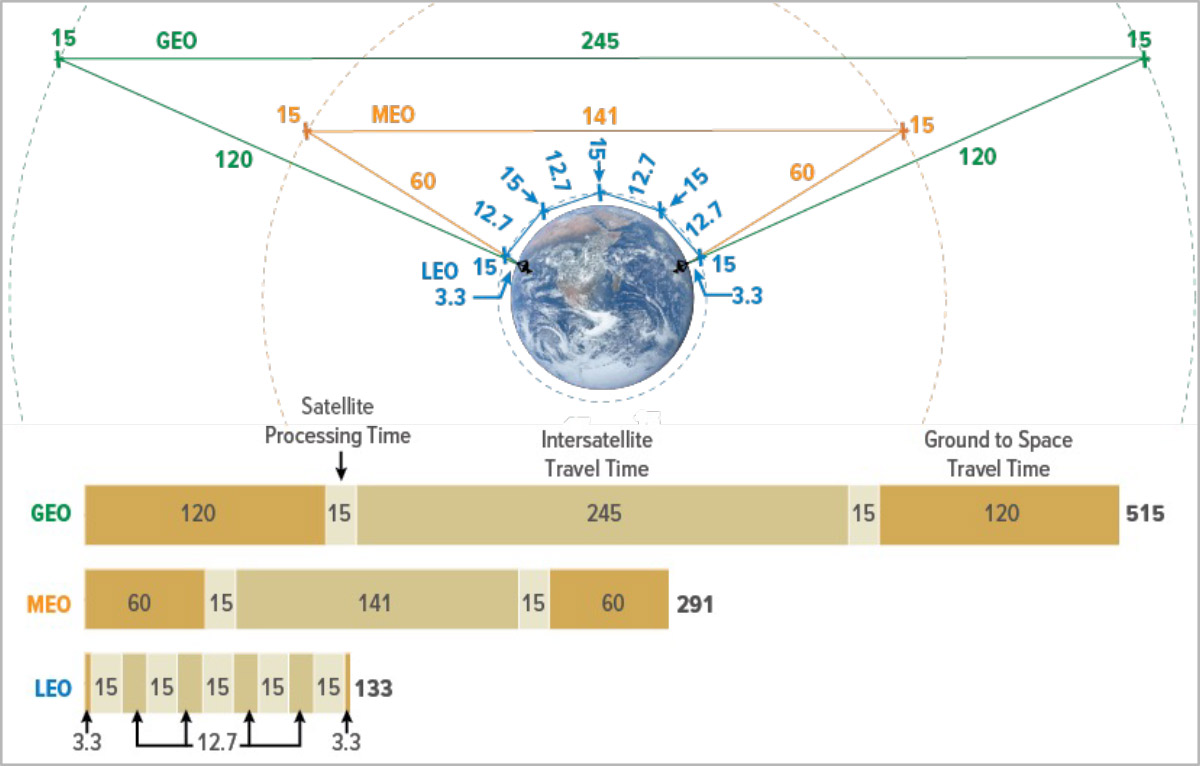
Example of latency time (milliseconds) to transmit data between two fixed points for LEO, MEO, and GEO constellations. LEO transit times are much shorter than MEO or GEO. Source: CBO
- Flexible Global Coverage: LEO utilized by smallsat and cubesat constellations allows for more flexible global coverage, as the lower orbital height allows each satellite to make a full pass around the Earth approximately once every 90 - 120 minutes, known as an “orbital period”. This allows satellite constellation operators to offer full global coverage without the time and expense of launching large, GEO-capable satellites.
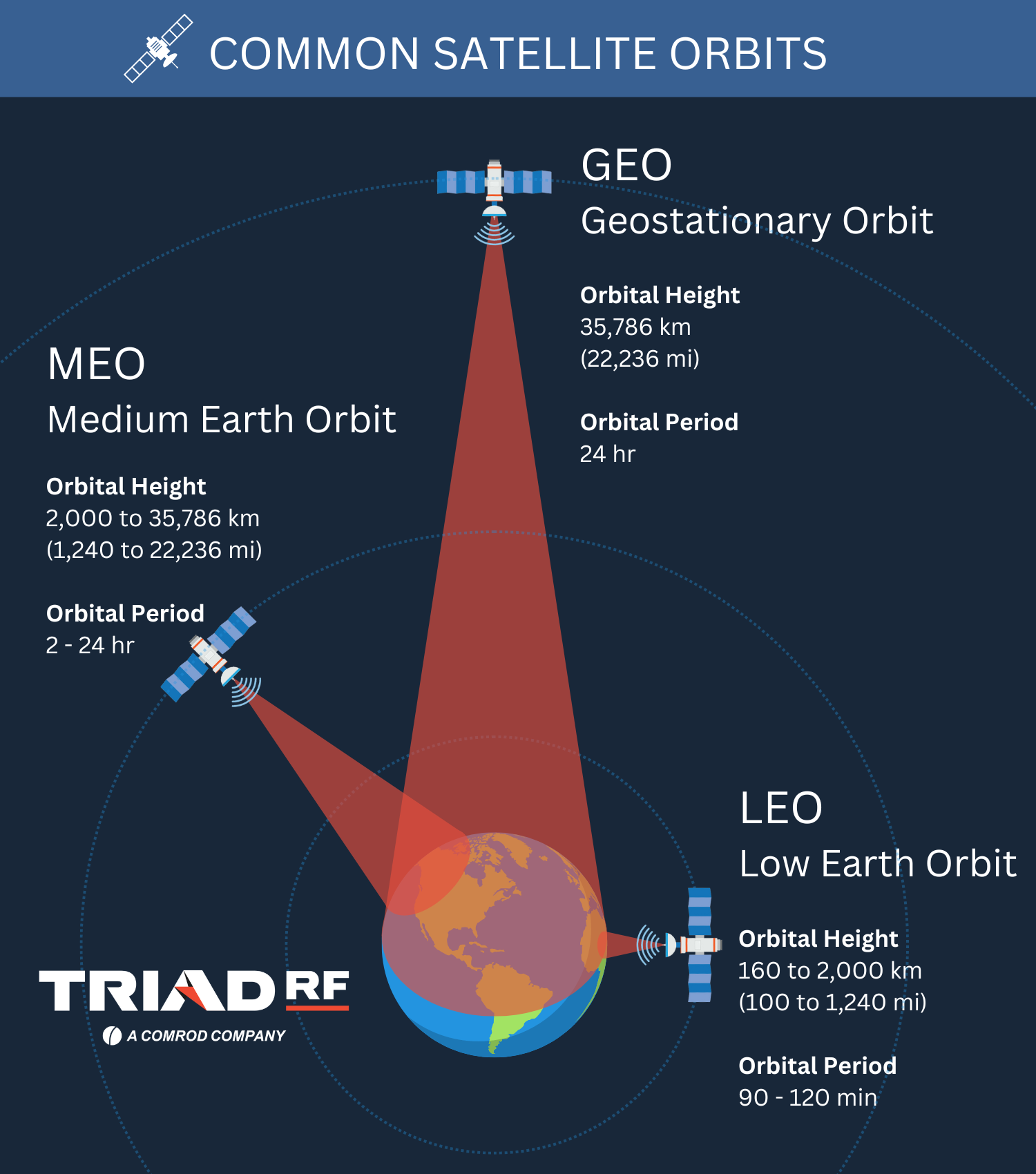
Characteristics of the three major satellite orbits. Source: Triad RF Systems
- Low Cost: The price to design, build, and launch a complete cubesat to LEO is magnitudes lower than satellites destined for higher orbits such as GEO. The cubesat and smallsat market is primarily driven by private enterprise, tech startups, and university-based or affiliated labs. These customers are willing to use industrial-grade components that are less expensive than GEO-certified, radiation-hardened products.
The cost per kilogram to put a smallsat into LEO is also many times less expensive than GEO satellite launches.
- Low Power Requirements: With their orbit close to the Earth's surface and utilization of lower frequency bands for RF communication links, less power is required to send or receive signals from LEO satellites, ideal for low-power IoT devices and their small data packages. Radios, amplifiers, power systems, and other components designed for cubesats are less expensive than their high-power equivalents for GEO satellites.
Triad RF Makes 5G Deployment Simple
Several NewSpace companies have already launched satellite-based IoT networks, with many more under development with expectations of rapid market growth for the rest of this decade.
Triad RF has spent the past decade perfecting the design and manufacture of high-power RF amplifiers, radio front ends, and Integrated Microwave Assemblies designed to solve the complexity of amplifying RF signals for the challenges of non-terrestrial communication networks. Our products have accumulated over 20 years of combined operational flight heritage in LEO.
TTRM2020: The most popular S-Band (n256) RF front end for cubesat / smallsat use, with proven flight heritage
For Satellite-based 5G networks and NB-IoT application enablement, Triad part TTRM2020 offers robust support for satellite 5G deployments. This module is SWaP-optimized for Cubesat bus housing of one unit (1U) or larger.
Designed to optimize non-terrestrial 5G / n256 S-Band performance for any attached SDR, TTRM2020 features an integrated dual PA / LNA and passband filter architecture tuned for optimal uplink and downlink performance and out-of-band frequency rejection.
Need help planning the integration of 5G / NB-IoT communication into your next satellite vehicle? Our Engineering and Applications teams have extensive experience integrating our products across many cubesat and smallsat platforms.
For more information, Contact Triad

